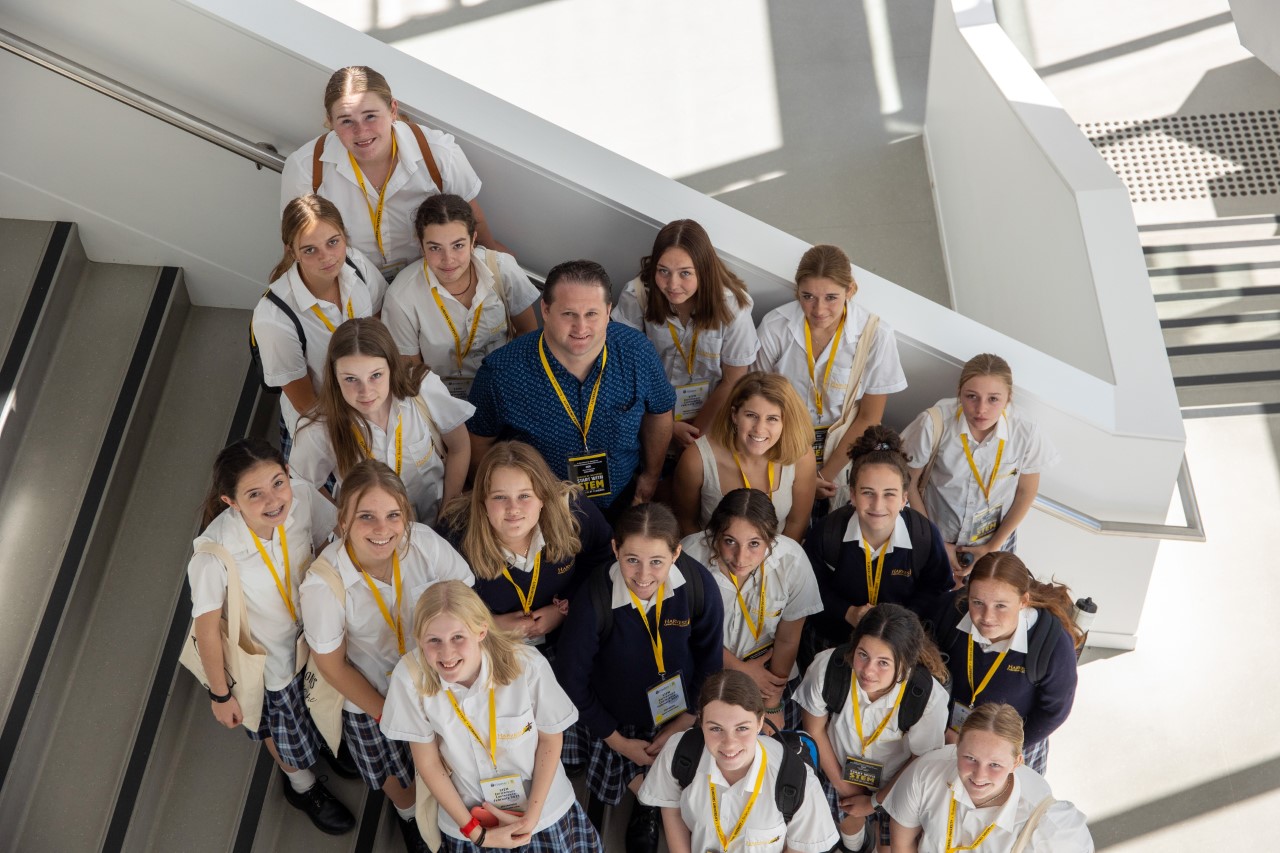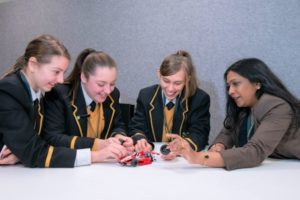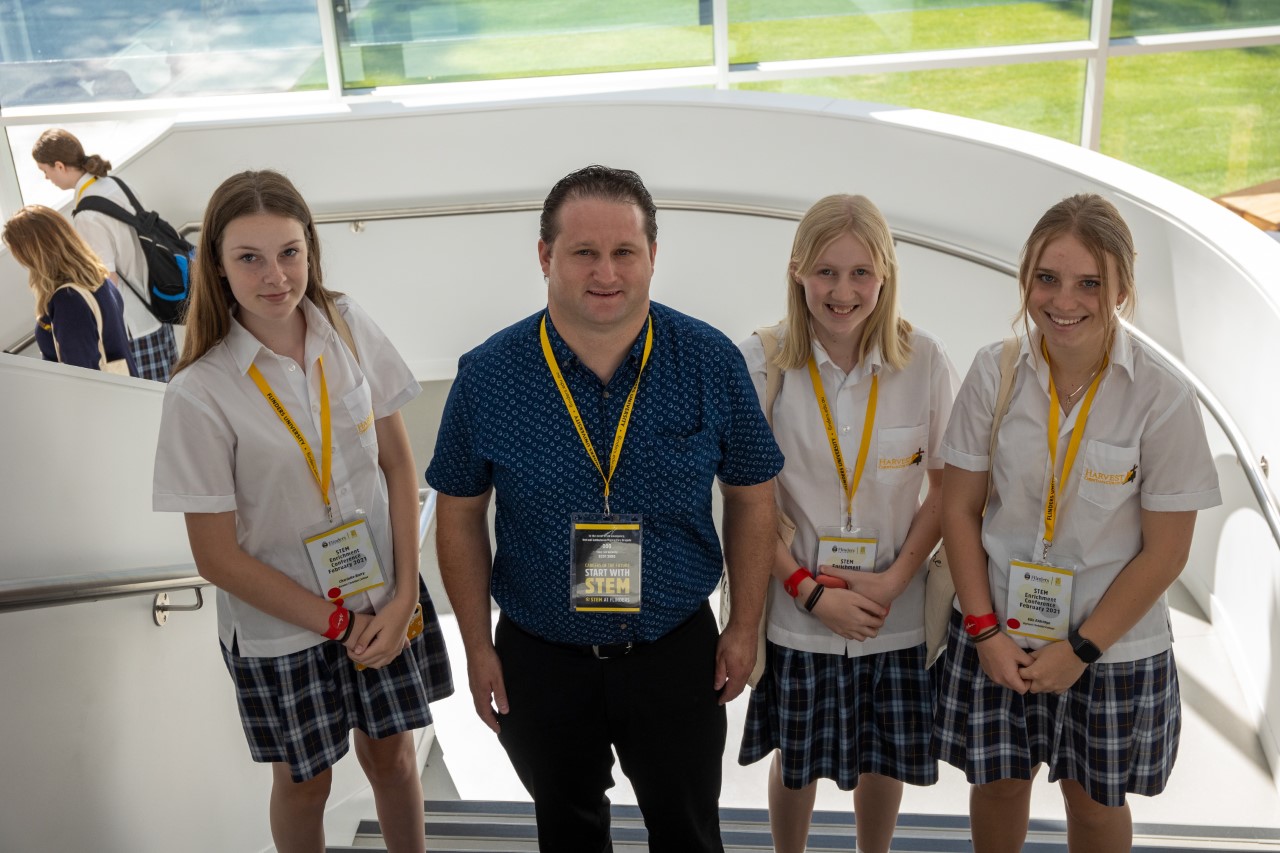
New federal funds will help Flinders University support hundreds of female Year 9 students in South Australia and the Northern Territory to build competitive skills in science, technology, engineering and mathematics (STEM), along with entrepreneurial skills to build their future education and career opportunities.
The Flinders University STEM Enrichment Academy is the only SA university to receive almost $1 million in Australian Government Department of Industry, Science and Resources funding through the latest round of the Women in STEM and Entrepreneurship (WiSE) program.
The $996,144 funding injection will ramp up the successful Academy’s outreach in regional and suburban schools, to target a further 1000 schoolgirls through specially adapted STEM enhancement courses, as well as supporting a new diploma course for up to 150 secondary school STEM teachers.

“We are aiming to engage thousands of girls by giving them and their teachers ‘real world’ insights into the career and education pathways possible via STEM studies,” says lead chief investigator Professor of Physics Maria Parappilly, who is director of Flinders University’s STEM Enrichment Academy.
“We hope to increase the gender balance in occupations such as engineering, mathematics and other career pathways by equipping female students with fresh insights into the potential and excitement of STEM subjects, including with industry placements and hands-on skills enrichment.”
More than 90% of female participants in the first year of the Academy’s program have gone on to study advanced STEM subjects in their senior years of high school education (see: https://vimeo.com/596253418).
Professor Parappilly says reversing a trend of declining female STEM participation is crucial to close the gender pay gap and to address skills shortages and meet economic productivity gain targets.
“In the first phase of the Academy, we influenced more than 500 participating girls positively by boosting their confidence in STEM subjects and reversing student attitudes on the difficulty of STEM careers.
The program increased the numbers studying STEM in their senior years of high school, with subsequent increased university enrolments,” she says.

“A new and exciting addition in the next part of the project is to design and offer an Enhancement Diploma in Teaching Physics and Math to upskill primary teachers and secondary teachers without formal STEM qualifications so they can teach physics and maths at higher levels – and develop sustainable STEM capabilities among teachers.”Federal Minister for Industry and Science Ed Husic says the latest round of $15.9 million in grant funding aims to support more women into STEM careers, and to encouraging girls to study STEM subjects.
“We want to make sure that more women find lasting, rewarding and successful careers in STEM fields, regardless of their background,” says Mr Husic.
“The grants program focuses on projects that remove systemic and cultural barriers for women in STEM education, careers, innovation and entrepreneurship. It supports projects that increase the number of women in senior leadership and decision-making positions in government, research organisation, industry and business.”
Increasing the number of female students studying STEM – physics and engineering in particular – and ensuring teachers are better equipped in regional schools are among the goals of Phase 2 of the Flinders Academy, and will feature:
- Expanding into regional and remote areas of SA and the NT to engage another 1000 girls and 150 teachers.
- Enriching participating girls’ motivation through high-quality hands-on labs designed to arouse curiosity and develop an innovative mindset.
- Explaining and illustrating physics through enhancing appreciation of physics in the community and to increase student numbers in University STEM programs.
- Providing female role models in STEM occupations, to explicitly address ‘imposter syndrome’ and improve their confidence.
- Building capacity in the STEM teaching workforce through a STEM enhancement diploma.

Since 2018, the successful program has run enrichment days, a design and technology series and STEM conferences for 531 Year 9 South Australian schoogirls and their teachers, including Year 9 students from a SA regional schools at Whyalla, Clare, Mt Compass and Kadina on Yorke Peninsula.
Kadina Harvest Christian School secondary science teacher James Snudden, who attended last year’s STEM Academy conference at Flinders University’s main campus at Bedford Park, says the three-day STEM Enrichment conferences and workshops “inspired me to promote STEM careers and teriary pathways to my students”. “All four of the Year 9 students who attended the 2019 conference are now studying Physics and Specialist Mathematics as Year 11 students. “I have also attended the dedicated teacher professional development sessions which have given me training and access to resources that have helped to improve my classroom delivery of STEM content,” Mr Snudden says.

